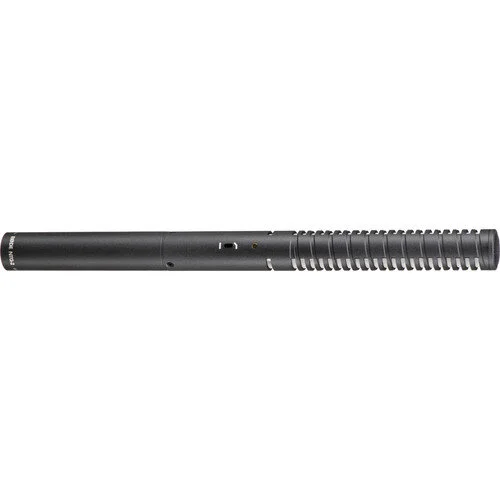 Image 1 of 6
Image 1 of 6

 Image 2 of 6
Image 2 of 6

 Image 3 of 6
Image 3 of 6

 Image 4 of 6
Image 4 of 6

 Image 5 of 6
Image 5 of 6

 Image 6 of 6
Image 6 of 6







RODE Ntg2 Condenser Shotgun Microphone
Rode Ntg2Condenser Shotgun Microphone
The NTG2 is a lightweight condenser shotgun microphone, designed for professional applications in film, video, television and broadcast. Its full frequency response, low noise and audio transparency makes it ideal in a range of applications including filmmaking, voice-over and streaming. It can operate either from P48 phantom power or via a removable AA battery for maximum flexibility in the studio or in the field. It also features a switchable high-pass filter for added flexibility.
Key Features
Premium dual-powered shotgun microphone
Operates from either P48 phantom power or AA battery
Low noise and full frequency response
Highly directional
High-pass filter (80Hz)
Lightweight and easy to use
Specifications
Acoustic Principle: Line Gradient
Active Electronics: JFET impedance convertor with balanced transformer output
Capsule: 0.50"Polar Pattern: Supercardioid
Address Type: End
Frequency Range: 20Hz - 20kHz
Output Impedance: 250Ω
Maximum SPL: 131dB SPL
Maximum Output Level: 6.9mV (@ 1kHz, 1% THD into 1KΩ load)
Sensitivity: -36.0dB re 1 Volt/Pascal (15.00mV @ 94 dB SPL) +/- 2 dB @ 1kHz
Equivalent Noise Level (A-Weighted): 18dBA
Power Requirements: AA Battery and P48
Output Connection: XLR
Weight (g): 161
Dimensions (mm): 280 (H) x 22 (W) x 22 (D)
FAQs
Q. How can I connect my mono microphone XLR output to a stereo TRS socket?
A. To connect the XLR microphone output to a TRS stereo input (3.5mm socket), you will need an XLR to stereo TRS cable. This will allow you to receive the audio signal on both input channels.
Please note: Should the microphone require phantom power to operate, this will not be available from a TRS socket.
Rode Ntg2Condenser Shotgun Microphone
The NTG2 is a lightweight condenser shotgun microphone, designed for professional applications in film, video, television and broadcast. Its full frequency response, low noise and audio transparency makes it ideal in a range of applications including filmmaking, voice-over and streaming. It can operate either from P48 phantom power or via a removable AA battery for maximum flexibility in the studio or in the field. It also features a switchable high-pass filter for added flexibility.
Key Features
Premium dual-powered shotgun microphone
Operates from either P48 phantom power or AA battery
Low noise and full frequency response
Highly directional
High-pass filter (80Hz)
Lightweight and easy to use
Specifications
Acoustic Principle: Line Gradient
Active Electronics: JFET impedance convertor with balanced transformer output
Capsule: 0.50"Polar Pattern: Supercardioid
Address Type: End
Frequency Range: 20Hz - 20kHz
Output Impedance: 250Ω
Maximum SPL: 131dB SPL
Maximum Output Level: 6.9mV (@ 1kHz, 1% THD into 1KΩ load)
Sensitivity: -36.0dB re 1 Volt/Pascal (15.00mV @ 94 dB SPL) +/- 2 dB @ 1kHz
Equivalent Noise Level (A-Weighted): 18dBA
Power Requirements: AA Battery and P48
Output Connection: XLR
Weight (g): 161
Dimensions (mm): 280 (H) x 22 (W) x 22 (D)
FAQs
Q. How can I connect my mono microphone XLR output to a stereo TRS socket?
A. To connect the XLR microphone output to a TRS stereo input (3.5mm socket), you will need an XLR to stereo TRS cable. This will allow you to receive the audio signal on both input channels.
Please note: Should the microphone require phantom power to operate, this will not be available from a TRS socket.
